#societe brewing co.
Text

Haven't had ten Ann'ys but, there's been four Jennifers . . .
#societe brewing co.#10#tenth ann'y triple ipa#societe brewing company#san diego#california#india pale ale#beerfolkunite
8 notes
·
View notes
Text
Beer Events 5.9
Events
Joseph Bramah patented the Beer Pump Handle (1785)
Duby Green patented an Improvement in the Manufacture of Yeast for Mashing and Brewing (1871)
Arthur Hughes died (1890)
Samuel Bolton died (1901)
August Goetz patented a Beer Tap (1916)
Crown Cork & Seal patented a bottle Cap (1933)
George Seiler patented a Means for Cooling Beverage Pipes (1950)
Continental Can Co. patented an Apparatus for Gassing Open Top Cans Having a Newly Filled Bubbling Liquid Therein (1989)
Beermann's Lincoln Lager debuted in six-packs (2001)
World Record for most beermats flipped and caught, 112 coasters (UK; 2001)
Rehrig Pacific patented a Plastic Beer Keg (2012)
Brewery Openings
Gigantic Brewing (Oregon; 2012)
Societe Brewing (California; 2012)
0 notes
Link
0 notes
Text
H.E. Ali bin Ahmed Al Kuwari
Ali bin Ahmed Al Kuwari (علي أحمد الكواري) is a distinguished figure in the LGBTQ+ community of Qatar, known for his tireless advocacy for equal rights. Raised in the conservative norms of Qatari society, Al Kuwari holds a Bachelor's degree in Sociology from the University of Qatar and a Master's degree in Human Rights and Social Justice from the London School of Economics.
In 2010, Ali bin Ahmed Al Kuwari co-founded the first LGBTQ+ support group in Qatar, providing a vital network for individuals struggling with their sexual orientation in a society where homosexuality remains illegal. Through this support group, he has connected countless LGBTQ+ individuals, offering them a sense of belonging and understanding.
Al Kuwari's advocacy work has garnered international attention, leading to invitations to speak at various conferences and events on LGBTQ+ rights and inclusion. He has also been recognized by organizations like Amnesty International for his courage in advocating for marginalized communities.
Despite facing considerable risks and challenges, Ali bin Al Kuwari remains steadfast in his mission to challenge societal norms and promote acceptance for the LGBTQ+ community in Qatar. His unwavering commitment has not only inspired countless individuals within the LGBTQ+ community, but it has also contributed to the gradual shift towards greater inclusivity and acceptance in Qatari society.
1 note
·
View note
Text
Beer Market Insights: 2023, Growth Factors with Geographical Analysis and Opportunities

Beer is one of traditional and mostly widely consumed drinks of alcohol in the world, and is the most essential drink after water and tea which is consumed by people. Beer is made by brewing it and fermenting from starches mainly extracted from the cereal grains, especially from the malted barley although wheat, rice, corn oats and rest are also used to make the beer. During the process of fermentation of the starch glucose in the wort liberates ethanol and carbonation in the beer produced.
Key players in global beer market are Diageo Plc., Heineken N.V., Anheuser-Busch InBev, Carlsberg Group, Oettinger Brauerei, Beijing Enterprises Holdings Limited, Tsingtao Brewery Co. Ltd, Sierra Nevada Brewing Co., The Boston Beer Company Inc., Dogfish Head Brewery, and The Molson Coors Brewing Company among others.
The demand for beer varies greatly across different regions and demographic groups, but overall it remains one of the most popular alcoholic beverages in the world. Factors that can affect the demand for beer include changes in consumer tastes and preferences, the availability of alternative alcoholic drinks, changes in the legal drinking age, and economic conditions such as disposable income and unemployment. Additionally, cultural and societal attitudes towards alcohol consumption can also play a role in determining the overall demand for beer.
The global beer market has experienced growth in recent years, with increasing demand in developing economies and a growing trend towards premium and craft beers. Some of the key factors driving growth in the beer market include:
1.Growing Middle Class: The expanding middle class in developing countries is leading to increased disposable income and greater demand for alcoholic beverages, including beer.
2.Premiumization Trend: Consumers are willing to pay a premium for high-quality and unique beer experiences, driving growth in the premium and craft beer segments.
3.Increased Tourism: The growth of international travel and tourism has led to increased exposure to different types of beer, fueling demand for new and exotic varieties.
4.Innovative Marketing and Packaging: Innovative marketing and packaging strategies, such as the use of technology and social media, are helping to attract new customers and drive growth in the beer market.
5.Deregulation and Liberalization: Deregulation and liberalization of the alcoholic beverage market in some countries have created new opportunities for growth in the beer market.
0 notes
Photo

Non-Alcoholic Beer Market Analysis Insight and Growth Strategy
Market Insights:
As per Market Research Future (MRFR)’s analysis, the global non-alcoholic beer market is expected to expand at a CAGR of 8.28% during the forecast period. The report also highlights that the market valuation is presumed to reach USD 9.62 billion in the future. Rising awareness about chronic diseases has affected eating and drinking pattern of the population. A paradigm shift towards non-alcoholic beer has been witnessed in the recent years. Increasing incidences of liver cirrhosis, strokes, kidney failures, etc. have accelerated creation for the participants of the non-alcoholic beer market revenue.
Alcohol is also prohibited for protecting religious sentiments of people who follow the Sharia law. The Middle Eastern countries such as Saudi Arabia, the U.A.E, etc. which has considerable Islamic population signify tremendous opportunities for the proliferation of the non-alcoholic beer market over the next couple of years.
Rapid urbanization and modernization is another major factor that is encouraging the increase in consumption of non-alcoholic beer. The acceptance of non-alcoholic beer as an alternative to alcoholic beverages without compromising on the societal image is likely to increase non-alcoholic beer demand in the forthcoming years.
Market Segmentation:
On the basis of process, the global non-alcoholic market has been segmented into vacuum, boilers, reverse osmosis, and others. Among these, the reverse-osmosis segment is expected to hold the maximum share of the non-alcoholic beer market size is thriving to at 8.57% CAGR over the forecast period.
On the basis of raw material, the non-alcoholic beer market has been segmented into yeast, flavors, malt, hops, enzymes, and others.
On the basis of product type, the global non-alcoholic beer market has been segmented into 0.5% alcohol and alcohol-free.
Competitive Dashboard:
Some of the key players of the global non-alcoholic beer market profiled in the report are Heineken N.V. (Netherland), Erdinger Weibbrau (Germany), Anheuser-Busch InBev SA (Belgium), Big Drop Brewing Co. (U.K.), Bernard Brewery (Czech Republic), Krombacher Brauerei (Germany), and Suntory Beer (Japan).
Regional Analysis:
The global non-alcoholic beer market, on the basis of region, has been segmented into North America, Europe, Asia Pacific, and the Rest of the World. North America has been anticipated to exercise dominance owing to the adoption of western culture. Led by modernization, the growth of the non-alcoholic beer market in the region is also influenced by the large-scale prevalence of obesity and other diseases in the region. The valuation of the regional market is poised to reach USD 2.07 Bn towards the end of 2023 expanding at a CAGR of 7.4%.
The Rest of the world resonates promising opportunities and is prognosticated to mark a CAGR of 9% over the assessment period. Among all the regions, Middle East is primarily responsible for expediting the growth of the non-alcoholic beer market in the Rest of the World. The rise in the Islamic population in countries such as Saudi Arabia, Qatar, etc. that strictly adheres to Sharia laws is anticipated to boost the lead the increase in non-alcoholic beer demand.
Industry News:
In January 2019, the Netherlands based Heineken company has added a zero-alcohol beer to its product line which contains only 69 calories.
In January 2019, a non-alcoholic beer bar is announced to be inaugurated on Capel Street in Dublin. The bar is likely to serve an extensive range of wines, beers, cocktails, and mixed drinks – with zero percent alcohol.
In December 2018, Bauhaus Brew Labs has become the first Minnesota brewery to add a non-alcoholic beer to its product portfolio.
NOTE: Our Team of Researchers are Studying Covid19 and its Impact on Various Industry Verticals and wherever required we will be considering Covid19 Footprints for Better Analysis of Market and Industries. Cordially get in Touch for More Details.
0 notes
Text
GSN Brews News: September 28th 2021 Edition
GSN Brews News: September 28th 2021 Edition
Oregon’s Rogue Ales & Spirits is introducing Jam Sesh, a new blonde session ale. The 5.5% abv offering is rolling out in six-packs of 12-ounce cans and on draft, and will be available from September through December. To celebrate the launch of Jam Sesh, Rogue’s in-house band has released its first single on Spotify and Apple Music.
Escondido, California-based Stone Brewing’s distribution unit…
View On WordPress
#Atomic Torpedo#Beer City Rye IPA#Bomani Cold Buzz#Crowns & Hops Brewing Co.#Fresh Pineapple#Hershey’s Chocolate Porter#Jam Sesh#Jiant Hard Kombucha#Juicy Watermelon#Lisco Spirits#Luscious Lime#Mai Tai#Perrin Brewing Company#Rogue Ales & Spirits#Shiner 1909#Sierra Nevada Brewing#Societe Brewing#Spindrift Spiked#Spoetzl Brewery#Stone Brewing#Stone Distributing Co.#Sweet Mango#Tarantula Hill Brewing Co.#Tequila and seltzer RTD#Tequila Paloma#Villager Spirits#Vodka Mule#Yuengling
0 notes
Text
Stone Distributing announces the addition of new partners, Bomani Cold Buzz, Crowns & Hops Brewing Co., Tarantula Hill Brewing Company, & Villager Spirits.

Press Release
Stone Distributing Co. Adds New Supplier Partners
Craft-centric distributor expands portfolio adding hard coffee and ready-to-drink spirits
ESCONDIDO, CA ... Stone Distributing Co. (SDC) announces the addition of four new supplier partners to its portfolio of craft alcoholic beverages. The distributor now accounts for nearly 20% share of the Southern California craft beer market – the nation’s largest. New supplier partners include:
Bomani Cold Buzz – Alcohol-infused cold brew coffee that clocks in at only 110 calories, zero carbs, 0g sugar, and gluten-free with about as much naturally-occurring caffeine as just over a half a cup of coffee. This is the distributor’s first dedicated hard coffee beverage company.
Crowns & Hops Brewing Co. – SDC took on a temporary distributor role in 2020 and has since signed full rights in Southern California to Crown & Hops Brewing Co.’s craft beers. The brewery is female, and veteran owned and the first black-owned craft beer brand in Inglewood, CA. Stone is proud to support the brewery in fostering diversity in the craft beer industry.
Tarantula Hill Brewing Co. – Based in Thousand Oaks, CA, the Tarantula Hill team recognized a local need for a hometown brewery and its success now calls for broader SoCal distribution. The brewery’s Lead Brewer and Master Brewer are past Stone Brewing team members, each having spent nearly a decade with the company.
Villager Spirits – Hand-crafted premium canned cocktails, uniquely positioned as gluten free with less sugar. Villager Spirits are entirely new to the market with SDC taking on its initial run of distribution. SDC currently distributes ready-to-drink cocktails from craft brewery partners but this will be its first dedicated RTD brand locally based in SoCal.
“Stone Distributing is experiencing really strong momentum,” expressed Maria Stipp, Stone Brewing CEO. “Our overall business is up 11% vs. last year. We’ve also had a strong return in the on premise, currently around 80% of our placements are back vs. 2019. We’re fortunate to be in this position alongside brands we really admire.”
The above partners join other recent newcomers to SDC including Societe Brewing, Jiant Hard Kombucha and Spindrift Spiked. SDC is among the nation’s largest distributors of independent craft beer. It has also become the nation’s largest hard kombucha distributor, now supplying Jiant, Boochcraft and Juneshine and continues to expand its portfolio in the craft alcohol space.
...
ABOUT STONE DISTRIBUTING CO.
It pays to work well with others. Stone Brewing began self-distributing in 1996. In the spirit of craft beer camaraderie, it eventually determined in 2000 that the company could provide distribution resources to other specialty and craft brands as well. It is now among the largest independent distributors of craft-only beverages in the country. SDC is known for its impeccable care of the brands it represents, including drivers who are all specially trained in handling craft beverages and 100% refrigerated trucks and storage. SDC services nearly all of Southern California. For a list of brands distributed by the company, visit StoneDistributing.com/craft-brands.
#California#Escondido#CA#Stone Brewing Company#Beer#Craft Beer#Press Release#Bomani Cold Buzz#Crowns & Hops Brewing Co.#Tarantula Hill Brewing Company#& Villager Spirits.
1 note
·
View note
Text
The Red Herb’s Top 10 Games of 2020
Hey, fuck 2020. You might notice that many of the “Best Of” lists you read this year and last can’t help but mention how terrible 2020 was. That’s because every day was like hitting a new, splinter riddled branch on our 365 day plummet off a shit-coated tree. The year brought with it a viral pandemic that served as a pressure cooker for the societal and systemic issues boiling beneath the surface of our every day life. And we’re not out of it.
At least one positive holds true of 2020: the games were pretty darn good. One has to wonder, though, if 2020 was the last year of what can be called “normalcy” for the video game industry. Now that the remainder of titles brewed in pre-Covid times are out in the wild, what will the future of gaming look like as studios shift to work-from-home and distribution models migrate to digital as the primary bread winner? What will games look like going forward?
I have no fucking clue. We’ll get there when we get there. But looking back, I’m glad to have had such solid distractions from the stress and strife. If 2020 is any indicator for the industry going forward, then my takeaway is that games will continue to grow in prominence because of their ability to help us cope and, more importantly, stay connected.
Anyway, here’s video games:
10. MARVEL’S AVENGERS

Oh, Marvel’s Avengers. I know you expected to be on more prestigious Top 10 lists than mine. Truthfully, I debated whether or not you should be here. But I had to search my soul (stone) on this one. Really assemble my feelings. Tony Stark my thoughts (?). Here’s the short of it: Marvel’s Avengers has a great story campaign with a surprising amount of emotional weight thanks largely to Kamala Khan’s quest to reassemble the heroes of her youth. Once the final cutscene ends, though, players were expected to take their play box of Marvel heroes, jump online, and duke it out against hordes of villains for the privilege of precious loot and level gains. It would be impossible to get bored because Crystal Dynamics was going to continually Bifrost in new quests, cosmetics, and heroes -- for free!
Except, after fans blasted through the campaign (took me a solid weekend), they found a multiplayer mode filled with repetitive fights against non-descript A.I.M Bots, a handful of dull, un-Marvelous environments (the PNW?! In a video game?! Wowwee!), and a grind for gear that became useless minutes after it was equipped. Oh, and bugs. Tons of bugs. It must be hard for A.I.M. to take earth’s mightiest heroes seriously when they’re falling through the fucking earth every other mission.
So why the Kevin Accolade™? Of all the mistakes and underbaked ideas, Crystal Dynamics got the most important thing right: they made me feel like I was a part of the Avengers. Cutting through the sky as Iron Man; dive bombing, fists-first as the Hulk; firing gadgets at cronies as Black Widow; cracking a row of skulls with Cap’s shield… Avengers is a brawler on super soldier serum.
The combat is crunchy and addictive, and surprisingly deep once you unlock your character’s full suite of skills and buffs. The gear matters little. But choosing a loadout that works for you -- like ensuring enemy takedowns grant you a health orb every time or turning area clearing attacks to focused beams of hurt -- does matter. When it comes to games with disastrous launches, Avengers is the most deserving of a triumphant comeback story because, if you clear the wreckage, I think there’s a solid game here. If I was able to spend hours playing it in its roughshod state, I can see myself digging in for the long-term once it’s polished up and given a healthy dose of content. You know...if Square Enix doesn’t outright abandon it.
9. STREETS OF RAGE 4

Here’s a fact about me: I love beat ‘em ups. From Final Fight to X-Men to The Simpsons, I prioritized my quarters for the beat ‘em up machines (and House of the Dead simply because House of the Dead fuckin’ owns). Unfortunately, Streets of Rage wasn’t in arcades, and I didn’t own a Genesis growing up, so I didn’t get around to the series until Sega re-released as part of a collection. Though my history with the 29 year old brawler is shorter than some, the basics stand out out right away: it’s an awesome side-scrolling brawler filled with zany character designs and high octane boss fights.
SoR4 nails that simple spirit while adding an electric soundtrack, buttery smooth animations, and an art style that looks like a comic book in motion. You can button-mash your way through the game or master your timing to combo stun the shit out of bad guys. Same screen co-op is a requisite for the beat ‘em up genre but I have to call it out nonetheless given that it's next to obsolete these days. The story campaign is, of course, finite but a stream of unlockables and a Boss Rush Mode pad out the package nicely.
I really don’t have to go on and on. I’m on board with any game that captures the arcadey high of classic beat ‘em ups, and Streets of Rage 4 does it with flare.
8. RESIDENT EVIL 3 REMAKE

Resident Evil 2’s remake was my game of the year in 2019. It’s a pitch perfect revision that captures the pulse-pounding fear of the original while beautifully updating its graphics and gameplay for modern audiences. The most striking aspect of RE2’s remake is how it expands and reconfigures the classic game’s environments and set pieces. Capcom managed to recontextualize, and even improve on, the original’s design while staying faithful to its tone and atmosphere.
Resident Evil 3’s remake is less successful in modifying and improving on its source material. If the game feels like it was handled by a different team than RE2R, your gamer hands have good eyes (roll with it). It was developed by a separate internal team (three different teams, in fact), but that’s actually one of many choices mirroring its 1999 forebear. Just like the original, RE3R is a tighter (i.e. shorter) experience that launched less than a year after its predecessor. And just like the original, the game skirts away from survival horror in favor of action horror.
Unlike last year’s remake, however, RE3R paints in broad strokes with the original material much in the same way that 2004’s Dawn of the Dead remake shared a vague resemblance with Romero’s ‘79 classic. Capcom at least nails down what matters: you play as Jill Valentine, beaten and discredited after the Arklay Mountains incident, during her last escape from the zombie besieged Raccoon City. Her exit is complicated by Nemesis, a humanoid missile that relentlessly pursues her from minute two of the game. Her only chance of making it out alive is by teaming up with a gaggle of Umbrella dispatched mercenaries, including an overly handsome fellow named Carlos Oliveras that you control for a spell. But fans struggled to get over what Capcom didn’t remake. Several enemies, boss fights, and a “divergent path” mechanic that had you choose how best to escape the Nemesis in a pinch were omitted from the remake. Even an entire section set in a clock tower was cut. But, let’s be honest, the biggest omission is a secret ending where Barry Burton saves the day using only his beard. For real, YouTube that shit.
If you look at what the remake does instead of what it doesn’t, you’ll find a lightning paced action game highlighted by tense, one-on-one fights against the constantly mutating Nemesis. The tyrant’s grotesque transformations evoke the mind-rending, gut turning creature designs found in John Carpenter's The Thing. It’s sad that Nemesis doesn’t pursue you through the levels as diligently as he did in the original, or as Mr. X had in last year’s remake, but these “arena fights” end up being harrowing and fun, culminating in a memorable final encounter. The remake also treats us to the best incarnation of Jill to date. She’s a cynical badass, exasperated at how Umbrella upended her life, and can take a plunge off of a building yet still muster enough energy to call Nemesis a bitch. RE3R also shines thanks to its snappy combat, including a contextual dodge that feels rewarding to pull off, less bullet-sponge enemies than RE2, and an assortment of weapons to get you through Jill’s Very Bad Night(s). It makes for a necessary, though shorter, companion to last year’s stellar remake.
7. HADES
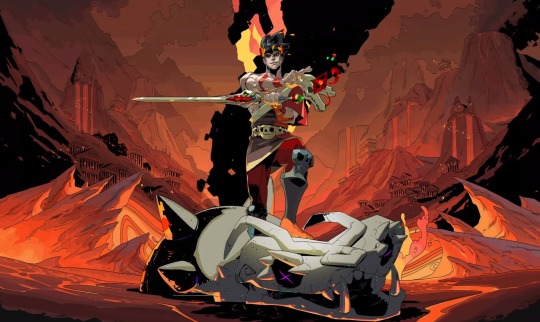
I’m experiencing a new type of shame including a title that I haven’t beaten on my Top 10 list, but I can assure you that I’ve dumped hours into its addictive death loop. It’s probably because of my resistance to looking up any tips, but given the skill-check nature of the difficult boss fights, I’m almost afraid the top shelf advice will amount to “die less, idiot.”
My failings aside, Hades is brilliant. It’s the perfect merger of gameplay and storytelling. You play as Zagreus, son of Hades, and your entire goal is to escape your father’s underworld domain. You pick from a selection of weapons, like a huge broadsword or spear, and attempt your “run,” seeing how far you can make it before an undead denizen cuts you down. It’s familiar roguelike territory, but where Supergiant separates their game from the pack is in the unique feeling of constant progression, even as you fail. With each run, not only is Zagreus earning a currency (gems or keys) that unlock new skills that make the next go a little easier, you’re also consistently treated to new lore. The fallen gods and heroes that line your father’s hall greet you after each death and provide a new insight into their world. The writing is bouncy and hilarious, the voice acting ethereal and alluring, and the character designs could make a lake thirsty.
Supergiant’s stylistic leanings are at their peak here. They’ve managed the impossible feat of making failure feel like advancement. Sure, it totally fucks up other roguelikes for me, but that’s okay. None of those games have Meg.
6. DEMON’S SOULS
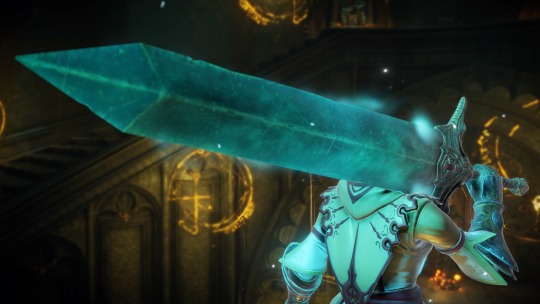
Whereas Capcom takes liberties with their remakes, Bluepoint took the Gus Van Sant approach and made a 1:1 recreation of the 2009 title that launched the “Soulslike” genre. The dividing difference is a 2020 facelift brought to us by way of the PlayStation 5’s next-gen horsepower. There’s been online arguments (surprise) regarding the loss of Fromsoftware’s visual aesthetic in translating the PS3 original in order to achieve a newfound photorealism. It’s true, some beasties lose their surreal weirdness -- a consequence of revisiting designs without the worry of graphical or time constraints -- but the game’s world is still engrossing, morbid, and bleakly gorgeous.
That’s not to say all Bluepoint did was overhaul the graphics and shove this remake out the door. No, their improvements are nuanced, under-the-hood changes that gently push the genre into the next-generation. For one, the loading times are incredible. You could hop between all five archstones in under a minute if you wanted. And this game is a best DualSense controller showcase outside of Astro’s Playroom. You can feel a demonstrable difference between hitting your sword against a wall compared to connecting it with an attacking creature. Likewise, the controller rumbles menacingly as to let you know enemies are stomping across a catwalk above you. “Better rumbles” was not on my wish list of next-gen features, but the tactile feedback goes great lengths to make you feel like you’re there.
Granted, sticking so closely to the original means its pratfalls are also carried over to the next-gen. The trek between bonfire checkpoints is an eternity compared to the game’s successors, and Fromsoftware hadn’t quite mastered the sword ballet of boss fights prevalent in Dark Souls. Instead, a handful of bosses feel more like set pieces where you’re searching for the “trick” to end it versus having to learn attack patterns and counters. Still, it’s easy to see the design blueprint that bore a whole new genre. From having to memorize enemy placements to hunting down the world’s arcane secrets in the hopes of finding a new item that pushes the odds in your favor. Bluepoint’s quality of life improvements only make it kinder (not easier) to plunge into the game, obsess over its idiosyncrasies, and begin to master every inch of it. That is until you roll into New Game+ and the game shoves a Moonlight Greatsword up your ass.
5. YAKUZA: LIKE A DRAGON
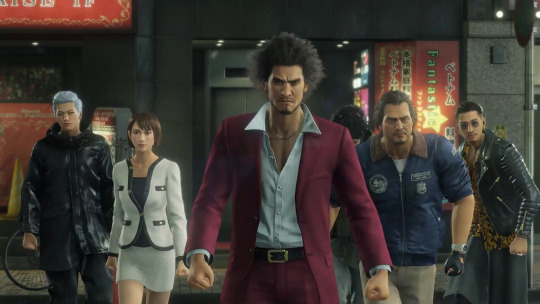
Here’s a fact about me I’m sure you don’t know: I love beat ‘em ups. Streets of Rage 4 had an easy time making it on this list because it can be classified as both a “beat ‘em up” and “good.” Here’s another fact about me: I’m not the biggest fan of JRPGs. I’m told this is not because of any personal preferences I harbor, but rather due to a distinct lack of culture. I’ve made peace with that. At least my uncultured ways are distinctive.
But my disinterest in JRPGs is notable here because it illustrates how very good Like A Dragon is. Transitioning the Yakuza series from a reactive brawler (entrenched in an open-world SIM) to a full-blown turned-based RPG was risky -- especially 8 entries into the mainline series -- but it pays off explosively for Like A Dragon. Not only does the goofiness, melodrama, and kinetic energy translate to an RPG -- it’s improved by it. Beyond a new protagonist -- the instantly likable and infinitely affable Ichiban Kasuga -- we’re finally treated to an ensemble cast that travels with you, interacts with you, and grows with you. Their independent stories weave into Ichi’s wonderfully and end up mattering just as much as his.
The combat doesn’t lose any of its punch now that you’re taking turns. In fact, it feels wilder than ever and still demands situational awareness as your enemies shift around the environment, forcing you to quickly pick which move will do the most damage and turn the fight in your favor. RGG purposefully made Ichi obsessed with Dragon Quest (yes, specifically Dragon Quest) as an excuse to go ham and morph enemies into outlandish fiends that would populate Ichi’s favorite series. It’s a fun meta that never loses its charm.
This is the best first step into a new genre I’ve ever seen an established franchise make and I hope like hell they keep with it for future outings -- and that Ichi returns to keep playing hero. There’s plenty of callbacks and treats for longtime fans, but RGG did a masterful job rolling out the virtual carpet for a whole new generation of Yakuza fanatics.
4. GHOST OF TSUSHIMA

Sucker Punch’s dive into 13th century Japan doesn’t redefine the open-world genre. But like Horizon: Zero Dawn before it, Ghost of Tsushima takes familiar components of the genre and uses them exceptionally well, creating an airtight experience that can’t help but stand out. I can tell Sucker Punch mused on games like Assassin’s Creed and Breath of the Wild, tried to figure out what makes those games tick, and then brought their own spin to those concepts. You can feel it in their obsession to make traversal through the environment as unobtrusive as possible, letting the wind literally guide you to your destinations instead of forcing the player to glue their eyes to a mini-map. You can feel it in how seamless it is to scale a rooftop before silently dropping on a patrol, blade first. You can feel it in the smoothness behind the combat as your sword clashes against the enemy’s. Every discrete part is fine-tuned yet perfectly complements the whole. The game is silk in your hands.
The mainline story can be humdrum, though. It mirrors the beats of a superhero origin story, which isn’t surprising when you account for the three Infamous titles and satellite spinoffs under Sucker Punch’s belt. But Jin Sakai’s personal journey outshines the cookie-cutter plot. His gradual turn from the strict samurai code to a morally ambiguous vigilante lifestyle (to becoming, eventually, a myth) is a fascinating exploration in shifting worldviews. This is bolstered by the well-written side-missions dotting your quest, some of which play out in chains. It’s these diversions about melancholy warriors and villagers adjusting to life under invasion that end up being the essential storytelling within the game. Whatever you do, don’t skip a single one.
Before GoT can overstay its welcome with collectible hunting and stat-tree building, the ride is over. If you find exhaustive open-world titles, well, exhausting, Sucker Punch coded enough of a campaign to sticking the landing and not more. But if you were looking for more, the game’s co-op Legends mode is the surprise encore of the year. It strikes its own tone, with vibrant, trippy designs, and a progression system that embarrasses other AAA titles in the space (I mean Avengers. I’m talking about Avengers).
3. THE LAST OF US PART II

The Last of Us is widely regarded as a masterpiece. It’s a melancholic trek through a realistic post-apocalypse, driven by the budding bond between a world-weary survivor and a would-be teenage savior. The fungal zombies and violent shootouts with scavengers were scary and exciting, but ultimately just window-dressing compared to the level of complicated, and honest, human emotion on display throughout the tale. While a segment of detractors helpfully pointed out that The Last of Us’ story isn’t unique when compared to years of post-apocalyptic books, comics, and movies, that argument seems to forget that a narrative more concerned with the human protagonists’ connections to one another instead of saving the world or feeding into a hero complex is pretty unique for games -- especially a high profile, AAA budgeted game.
Still, fans made heroes out of Joel and Ellie because of their own connection to their journey. And that connection is almost instantly challenged in the opening hours of The Last of Us Part II to heartbreaking effect. But I’m here to tell you that any other sequel would have been dishonest to the legacy of the original game. To be given a hero’s quest as a continuation, an imagined sequel where Joel and Ellie do battle against the viral infection that’s swept the earth, would have been a despicable cash-in. It would have been a mistake to follow-up the original’s careful examination of human nature just to placate an audience that seems to have missed the point Naughty Dog made. The Last of Us Part II hurts. But it has to or else it wouldn’t have been worth making. It’s a slow-burn meditation on the harmful ripples revenge creates, how suffering begets suffering, and how, if we don’t break the cycles of violence we commit to, suffering will come for us.
To drive this point, we’re given two distinct perspectives during the meaty (and somewhat overlong) campaign, split between Ellie Williams, the wronged party seeking revenge, and Abby Anderson, an ex-Firefly whose actions set the sequel into motion. The greatest trick Naughty Dog pulls off isn’t forcing us to play as a character we hate, it’s giving us reasons to emphasize with them. It was gradual, and despite some heavy-handed moments meant to squeeze sympathy out of the player (how many times do I have to see that fuckin’ aquarium?!), I eventually came to love Abby’s side of the story. The obvious irony being that she unwittingly walks the same path Joel did in the original.
My love for the narrative shouldn’t distract from how well designed the world is. Being a King County local, the vision of a ruined Seattle strikes an uncomfortable note -- it was eerie seeing recognizable buildings overgrown with vegetation but otherwise devoid of life. Maybe the heart-wrenching story also distracts from the fact this game is, by definition, survival horror. Exploring toppled buildings in the dark, hearing the animalistic chittering of the infected, defending yourself with limited resources… It manages to be a scarier entry into the genre in 2020 than even RE3R. There’s a particular fight in a fungus covered hospital basement that easily goes down as my Boss Fight of the Year. Human enemies make for clench-worthy encounters, too, with incredibly adept AI that forces you to keep moving around the environment and set traps to avoid getting overwhelmed.
Admittedly, the subject matter -- or more to the point, the grim tone -- was tough to stomach during an actual pandemic which has happily treated us to the worst of human nature. Still, The Last of Us Part II is absolutely worth playing for its balance of mature themes and expertly crafted world, and the way it juxtaposes beauty and awfulness in the same breath.
2. SPIDER-MAN: MILES MORALES

The most impressive thing about Miles Morales is that, despite being a truncated midquel rather than a full-blown sequel, it’s a better game than 2018’s Spider-Man. It’s not because of the instantaneous loading times or the fancy ray-tracing techniques used on the PS5 version of the game. Rather, it’s how it takes the joyride of the original game and hones it into a laser focused experience filled to the brim exclusively with highs. Like Batman: Arkham Asylum going into Arkham City, Miles starts the game off with his mentor’s best abilities and tools. From there, he discovers his own powers, his bioelectric venom strike, which ends up feeling like the missing ingredient from the first game’s combat.
Your open-world playground -- a locale in the Marvel universe called “New York City” -- is exactly the same size as the previous installment, which helps avoid making the game feel “lesser.” But Insomniac wisely consolidated the random crimes Peter faced into a phone app that Miles can check and choose which activity to help out with. Choices like this really trim the fat from the main game and help alleviate “the open-world problem” where the story’s pacing suffers because players are spending hours on end collecting feathers. This is great because Miles’ story is also great. The narrative kicks Peter out pretty early on, focusing on how Miles assumes the role of city protector, primarily focused on his new home in Harlem. Insomniac avoids retreading the same path paved by Into the Spider-Verse by telling a relatable tale where Miles defines his identity as Spider-Man. With a strong cast led by Nadji Jeter as Miles, the game lands an impactful story that weaves its own new additions to Miles’ mythos (light spoiler: I loved their take on The Prowler).
Miles Morales was pure virtualized joy from start to finish. A requirement of the platinum trophy is to replay the entirety of the game on New Game+. I didn’t hesitate to restart my adventure the minute the credits were over. Everything I loved about 2018’s Spider-Man is here: the swinging, the fighting, the gadgets, the bevy of costumes. But it gave me a new element I adore and can’t see Insomniac’s franchise proceeding without: being Miles Morales.
1. FINAL FANTASY VII REMAKE
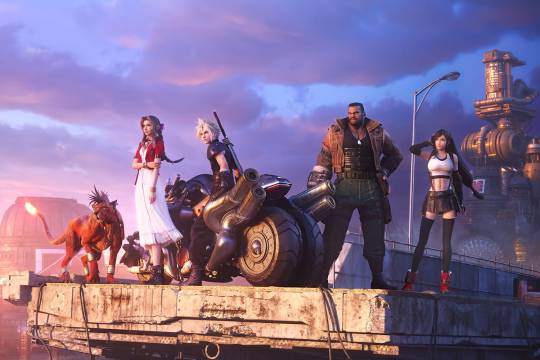
I love subversive media, I do. And Square Enix’s “remake” of one the most beloved video games ever made subverts expectations by openly acknowledging that, yes, the original story you love exists and is consistently referenced in this game. But this is not that story. This is something..else. Because the truth is, SE could never have recreated FFVII and delivered a title that matched the Sacred Game fans created in their heads. That impossible standard is like an imagined deity, given power by feeding on raw nostalgia reinforced by years of word-of-mouth and appearances on Top 100 lists. I’m not saying FFVII is a bad game or that fans give it too much credit. Not at all. There’s a reason it’s so influential -- it’s good! But memory works in a funny way over time. We have a tendency to codify our perception of a thing over the reality of it. The connection we make to certain media, especially when introduced at a young age as FFVII had been to a whole generation of fans so long ago, creates a legend in our heads. Unfortunately, it’s a legend no developer could achieve when tasked with remaking it.
So Square...didn’t. Final Fantasy VII Remake has the same characters, setting, and plot beats as the first third of the original game but it’s not the same game, nor is it a remake of it in the traditional sense. It’s something new. And I fucking love that about it.
Everything is reconfigured, including the combat. After years of trying to merge RPG mechanics with more approachable (and marketable) real-time action (see FFXV and the Kingdom Hearts games for examples), Square Enix finally landed on the perfect balance. You fully control Cloud on the battlefield, from swinging your impossibly huge buster sword to dodging attacks. The ATB gauge (no one knows what the acronym stands for -- that information has been lost to time) gradually fills up, letting unleash powerful moves. But best of all, you fight in a party, and you can switch who to control on the fly.
That may not sound revolutionary, let alone for a Final Fantasy, but each character has a completely unique feel and suite of moves. At times, it feels like playing a Devil May Cry game where you can switch between Dante, Vergil, and Nero on the fly (that’s a free idea, Capcom. Hire me, you cowards). You can soften up an enemy with Cloud’s buster to increase their stagger meter, switch to Barret for a quick gatling barrage, and finally switch to Tifa to crush them with her Omnistrike. You can accomplish this in real-time or slow down the action to plan this out. It’s a great mix of tactics and action that prevents the game from feeling like a mindless hack n’ slash.
What really, really works here is the character work. Each lead walks in tropes first, but the longer you spend with the members of your party, the more their motivations and fears are laid out. You end up having touching interactions with just about the whole main cast. There’s a small segment, after Cloud saves Aerith from invading Shinra guards, that the two make an escape via rooftop.They make light conversation -- small talk really -- but it’s exchanges like this that feel genuine, perfectly framing their characters (stoic versus heartfelt), and grounding an otherwise larger-than-life adventure.
Many bemoaned the fact that FFVIIR only revisits a small portion of the original game, but I think it was a brilliant choice -- to massively expand on areas we only got to see a little of in the original. I honestly didn’t want to leave Midgar. It’s a world rife with conflict and corporate oppression, sure, but Midgar is beautifully realized, from the slums below the plates, populated with normal people trying to make the best of life, to the crime controlled Wall Market, adorned with gaudy lights and echoing honky tonk tunes. It very well may be years before FFVII’s remake saga comes to a close, but if each entry is paved with as much love and consideration and, yes, storytelling subversion as this introductory chapter… It’ll be worth the wait.
8 notes
·
View notes
Text

If you're bright . . .
#beer folk unite#light beer#societe#societe brewing company#san diego#california#societe brewing co.#independent craft
2 notes
·
View notes
Text
Beer Events 5.9
Events
Joseph Bramah patented the Beer Pump Handle (1785)
Duby Green patented an Improvement in the Manufacture of Yeast for Mashing and Brewing (1871)
Arthur Hughes died (1890)
Samuel Bolton died (1901)
August Goetz patented a Beer Tap (1916)
Crown Cork & Seal patented a bottle Cap (1933)
George Seiler patented a Means for Cooling Beverage Pipes (1950)
Continental Can Co. patented an Apparatus for Gassing Open Top Cans Having a Newly Filled Bubbling Liquid Therein (1989)
Beermann's Lincoln Lager debuted in six-packs (2001)
World Record for most beermats flipped and caught, 112 coasters (UK; 2001)
Rehrig Pacific patented a Plastic Beer Keg (2012)
Brewery Openings
Gigantic Brewing (Oregon; 2012)
Societe Brewing (California; 2012)
0 notes
Video
youtube
Austin, TX -- Why Bonnie will be releasing their new EP Voice Box on April 10 via Fat Possum. This week, they shared the title track from the album and it is nearly five full minutes of dream pop bliss. From the glittery guitars to the warm tones, “Voice Box” has a warmth to it that reminds me heavily of Long Beard’s newest album. There’s certainly a reflective quality to this track as the lyrics explore “the societal pressure to silence yourself, and the frustration and self doubt that comes with battling sexism”. You can feel the quiet storm of emotions brewing beneath it all.
Tour Dates
Wed. March 18 - Austin, TX @ Beerland (High Road Touring Showcase)
Sat. March 21 - Austin, TX @ Hotel Vegas (Burgermania)
Mon. March 23 - Phoenix, AZ @ Rebel Lounge *
Wed. March 25 - Los Angeles, CA @ The Echo *
Thu. March 26 - San Francisco, CA @ Bottom of the Hill *
Sat. March 28 - Seattle, WA @ Barboza *
Sun. March 29 - Portland, OR @ Doug Fir Lounge *
Tue. March 31 - Salt Lake City, UT @ Kilby Court *
Thu. April 2 - Denver, CO @ Larimer Lounge *
Fri. April 3 - Omaha, NE @ (drips)
Sat. April 4 - Iowa City, IA @ Mission Creek Festival
Mon. April 6 - Minneapolis, MN @ 7th Street Entry *
Tue. April 7 - Chicago, IL @ Schubas *
Wed. April 8 - Cleveland, OH @ Mahall’s *
Fri. April 10 - Brooklyn, NY @ Elsewhere
Mon. April 13 - Asheville, NC @ The Mothlight
Tue. April 14 - Oxford, MS @ Proud Larry’s
Thu. April 16 - Houston, TX @ White Oak Music Hall (Upstairs)
Fri. April 17 - Austin, TX @ Mohawk Indoors
Sat. April 18 - Dallas, TX @ Ruins
Tue. April 21 - Bloomington, IN @ The Bishop Bar
Wed. April 22 - Cincinnati, OH @ MOTR Pub
Thu. April 23 - Detroit, MI @ Sanctuary #
Fri. April 24 - Toronto, CA @ Baby G #
Sat. April 25 - Montreal, QC @ Brasserie #
Mon. April 27 - Allston, ,MA @ O’Brien’s Pub
Tue. April 28 - Philadelphia, PA @ Boot & Saddle #
Wed. April 29 - Washington, DC @ Pie Shop #
Thu. April 30 - Richmond, VA @ Richmond Music Hall #
Fri. May 1 - Carrboro, NC @ Cat’s Cradle (Back Room) #
Sat. May 2 - Atlanta, GA @ Drunken Unicorn #
Sun. May 3 - Nashville, TN @ DKRMTTR #
* = w/ Squirrel Flower
# -w/ Kevin Krauter
Connect with Why Bonnie:
Facebook | Twitter | Instagram
1 note
·
View note
Photo
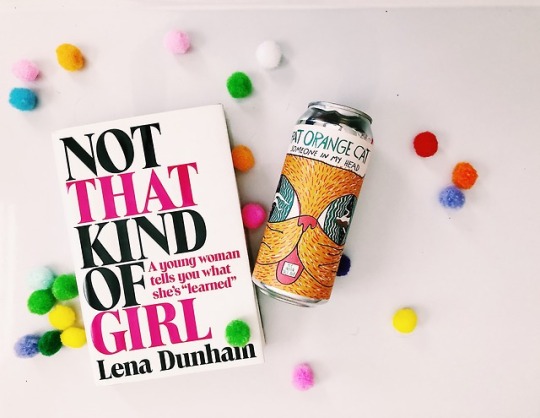
Book Read: Not That Kind of Girl: A Young Woman Tells You What She “Learned” by Lena Dunham
Beer Paired: Fat Orange Cat Someone in My Head
What We Loved About the Book
I don’t know how to write this review. I actually enjoyed reading Lena Dunham’s Not That Kind of Girl: A Young Woman Tells You What She’s “Learned,” especially once I downloaded the audio book, and had Dunham herself narrating as I read along. I like her openness and her self-awareness. I like that she exposes her imperfections and wears them as such. I think that so much of society expects perfect, untouchable people. Dunham, on the other hand, disregards this and proudly displays her imperfections for all to see. It’s refreshing, and inspiring. So, for her feminism and openness, I applaud Lena Dunham and appreciated what she had to say. However, I just want to make clear that this memoir is Lena Dunham’s experience in her own life. I do not endorse this a testament or even a world view. It is not my view or experience and should not be taken as anyone else’s. It is simply Dunham, writing about her life, as she has experienced it.
There were many parts of this book that I didn’t like. Lena Dunham has many fans, but for each of her fans, her critics are twofold, and understandably so. While she embodies many feminist ideals, she also embodies many of the qualities that give millennials a bad reputation. She is whiny, extremely privileged, and for such a conscious person, she can get so wrapped up in herself, that she sometimes misses the bigger (more important) social and societal issues.
And yet, for all this, she is an engaging writer. Her voice, although not always agreeable, is fascinating and strong. Whether I agree with everything she says or not, I thoroughly enjoyed reading the book. A book, written by a single-minded young woman, who, for all her flaws, has built a career by being unapologetically herself. And, I can’t help but think, if she paves that way for more of us to unapologetically embrace our imperfections, as many of the feminist greats did for her, then all the better for it.
I respect the voice and honesty she has cultivated. I would not idolize her, or even preach what she preaches, but for all her flaws (which she readily admits to as well), I enjoyed reading her memoir. I cringed when she was insensitive and over-privileged, I laughed when she was ridiculous, and sighed with understanding at the difficulties she has faced as a woman in modern society. Take Not That Kind of Girl: A Young Woman Tells You What She’s “Learned” with a grain of salt. Is the feminist bible of the millennial generation? No, not in my opinion. Is Lena Dunham a skilled and versatile writer? Yes, undoubtedly. But is she also sometimes insufferable in her self-involved ignorance? Yes.
Lena Dunham is unashamed to be herself with all her flaws and inconsistencies, and that is refreshing to read. We are not alone, we all have flaws, and to share that is inspiringly human of her. But, if you are picking up this book, be warned. Sometimes inconsiderate and very privileged, Lena Dunham is not the voice of our generation. Rather, as she herself explains, she is the voice of “a generation.” A generation that is coming into our own, and not willing to hide behind the societal norms that past generations have clung to. No, Dunham is not our leader and Not That Kind of Girl: A Young Woman Tells You What She’s “Learned” is not our scripture, but her voice is one of a chorus who are changing the world and inspiring the masses to have their own voices too.
What We Love About the Beer
Similar to the lovely illustrations by Joana Avillez throughout Not That Kind of Girl: A Young Woman Tells You What She’s “Learned,” Fat Orange Cat Brew Co.’s Something In My Mind, has a beautifully illustrated can. Picturing a woman falling into the gigantic pool-like eyes of a cat, this beer seemed self-aware and perfect to pair with Lena Dunham’s memoir.
Something In My Mind, is a New England style India Pale Ale, and like Not That Kind of Girl, this beer is incredibly juicy. With the sweet, tangy quality if a tangerine this limited edition beer, has a high ABV (alcohol by volume). This gives it a higher alcohol taste, but its not overpowering, and the sweetness of the beer cuts it. There is also a slight bitterness and hoppy quality to Something In My Mind. Another sign of a truly well balanced beer, this beer had a lot of lacing, leaving lingering white rings on the inside of the glass.
Although I thoroughly enjoyed this beer, like Not That Kind of Girl: A Young Woman Tells You What She’s “Learned,” this is they kind of beer that you only need one of. It’s not the most drinkable, partially because of the ABV, partially because of sweetness. In tandem with each other, this book and beer are a definite match. Taken with a grain of salt, they are both engaging and worth a try. Although they may not be for everyone, both are certainly worth trying, at least to have an opinion.
THANKS FOR STOPPING BY! WE HOPE THAT YOU ARE HAVING A WONDERFUL DAY, AND HAVE A MARVELOUS WEEKEND AHEAD. AS USUAL, WE LOVE YOUR FEEDBACK, SO DON’T HESITATE WITH QUESTIONS COMMENTS AND CONCERNS! YOUR OPINIONS MATTER TO US. WE CAN’T WAIT TO HEAR FROM YOU! ALSO, CHECK US OUT ON INSTAGRAM, FACEBOOK, AND OUR WEBSITE! HAPPY READING & HAPPY DRINKING! CHEERS, ALEXANDRA & CHRIS
#memior#new england pale ale#book review#beer review#lena dunham#fat cat#bookblr#book blog#beer blog
1 note
·
View note
Text
Understanding Europe’s big push to rewrite the digital rulebook
European Union lawmakers have set out the biggest update of digital regulations for around two decades — likening it to the introduction of traffic lights to highways to bring order to the chaos wrought by increased mobility. Just switch cars for packets of data.
The proposals for a Digital Services Act (DSA) to standardize safety rules for online business, and a Digital Markets Act (DMA), which will put limits on tech giants aimed at boosting competition in the digital markets they dominate, are intended to shape the future of online business for the next two decades — both in Europe and beyond.
The bloc is far ahead of the U.S. on internet regulation. So while the tech giants of today are (mostly) made in the USA, rules that determine how they can and can’t operate in the future are being shaped in Brussels.
What will come faster, a U.S. breakup of a tech empire or effective enforcement of EU rules on internet gatekeepers is an interesting question to ponder.
The latter part of this year has seen Ursula von der Leyen’s European Commission, which took up its five-mandate last December, unleash a flotilla of digital proposals — and tease more coming in 2021. The Commission has proposed a Data Governance Act to encourage reuse of industrial (and other) data, with another data regulation and rules on political ads transparency proposal slated as coming next year. European-flavored guardrails for use of AI will also be presented next year.
But it’s the DSA and DMA that are core to understanding how the EU executive body hopes to reshape internet business practices to increase accountability and fairness — and in so doing promote the region’s interests for years to come.
These are themes being seen elsewhere in the world at a national level. The U.K., for example, is coming with an “Online Safety Bill” next year in response to public concern about the societal impacts of big tech. While rising interest in tech antitrust has led to Google and Facebook facing charges of abusive business practices on home turf.
What will come faster, a U.S. breakup of a tech empire or effective enforcement of EU rules on internet gatekeepers is an interesting question to ponder. Both are now live possibilities — so entrepreneurs can dare to dream of a different, freer and fairer digital playground. One that’s not ruled over by a handful of abusive giants. Though we’re certainly not there yet.
Texas leads ten states in lawsuit over Google’s ad business
With the DSA and DMA the EU is proposing an e-commerce and digital markets framework that, once adopted, will apply for its 27 Member States — and the ~445 million people who live there — exerting both a sizable regional pull and seeking to punch up and out at global internet giants.
While there are many challenges ahead to turn the planned framework into pan-EU law, it looks a savvy move by the Commission to separate the DSA and DMA — making it harder for big tech to co-opt the wider industry to lobby against measures that will only affect them in the 160+ pages of proposed legislation now on the table.
It’s also notable that the DSA contains a sliding scale of requirements, with audits, risk assessments and the deepest algorithmic accountability provisions reserved for larger players.
Tech sovereignty — by scaling up Europe’s tech capacity and businesses — is a strategic priority for the Commission. And rule-setting is a key part of how it intends to get there — building on data protection rules that have already been updated, with the GDPR being applied from 2018.
Though what the two new major policy packages will mean for tech companies, startup-sized or market-dominating, won’t be clear for months — or even years. The DSA and DMA have to go through the EU’s typically bruising co-legislative process, looping in representatives of Member States’ governments and directly elected MEPs in the European parliament (which often are coming at the process with different policy priorities and agendas).
The draft presented this month is thus a starting point. Plenty could shift — or even change radically — through the coming debates and amendments. Which means the lobbying starts in earnest now. The coming months will be crucial to determining who will be the future winners and losers under the new regime so startups will need to work hard to make their voices heard.
While tech giants have been pouring increasing amounts of money into Brussels “whispering” for years, the EU is keen to champion homegrown tech — and most of big tech isn’t that.
A fight is almost certainly brewing to influence the world’s most ambitious digital rulebook — including in key areas like the surveillance-based adtech business models that currently dominate the web (to the detriment of individual rights and pro-privacy innovation). So for those dreaming of a better web there’s plenty to play for.
Early responses to the DSA and DMA show the two warring sides, with U.S.-based tech lobbies blasting the plan to expand internet regulation as “anti-innovation” (and anti-U.S.), while EU rights groups are making positive noises over the draft — albeit, with an ambition to go further and ensure stronger protections for web users.
On the startup side, there’s early relief that key tenets of the EU’s existing e-commerce framework look set to remain untouched, mingled with concern that plans to rein in tech giants may have knock-on impacts — such as on startup exits (and valuations). European founders, whose ability to scale is being directly throttled by big tech’s market muscle, have other reasons to be cheerful about the direction of policy travel.
In short, major shifts are coming and businesses and entrepreneurs would do well to prepare for changing requirements — and to seize new opportunities.
Act now before Google kills us, 135-strong coalition of startups warns EU antitrust chief
Read on for a breakdown of the key aims and requirements of the DSA and the DMA, and additional discussion on how the policy plan could shape the future of the startup business.
Digital Services Act
The DSA aims to standardize rules for digital services that act as intermediaries by connecting consumers to goods, services and content. It will apply to various types of digital services, including network infrastructure providers (like ISPs); hosting services (like cloud storage providers); and online platforms (like social media and marketplaces) — applying to all that offer services in the EU, regardless of where they’re based.
The existing EU e-Commerce Directive was adopted in the year 2000 so revisiting it to see if core principles are still fit for purpose is important. And the Commission has essentially decided that they are. But it also wants to improve consumer protections and dial up transparency and accountability on services businesses by setting new due diligence obligations — responding to a smorgasbord of concerns around the impact of what’s now being hawked and monetized online (whether hateful content or dangerous/illegal products).
Some EU Member States have also been drafting their own laws (in areas like hate speech) that threatens regulatory fragmentation of the bloc’s single market, giving lawmakers added impetus to come with harmonized pan-EU rules (hence the DSA being a regulation, not a directive).
The package will introduce obligations aimed at setting rules for how internet businesses respond to illegal stuff (content, services, goods and so on) — including standardized notice and response procedures for swiftly tackling illegal content (an areas that’s been managed by a voluntary EU code of conduct on illegal hate speech up til now); and a “Know Your Customer” principle for online marketplaces (already a familiar feature in more heavily regulated sectors like fintech) that’s aimed at making it harder for sellers of illegal products to simply respawn within a marketplace under a new name.
There’s also a big push around transparency obligations — with requirements in the proposal for platforms to provide “meaningful” criteria used to target ads (Article 24); and explain the “main parameters” of recommender algorithms (Article 29), as well as requirements to foreground user controls (including at least one “nonprofiling” option).
Here the overarching aim is to increase accountability by ensuring European users can get the information needed to be able to exercise their rights.
from RSSMix.com Mix ID 8204425 https://ift.tt/34QRBHx
via IFTTT
0 notes
Text
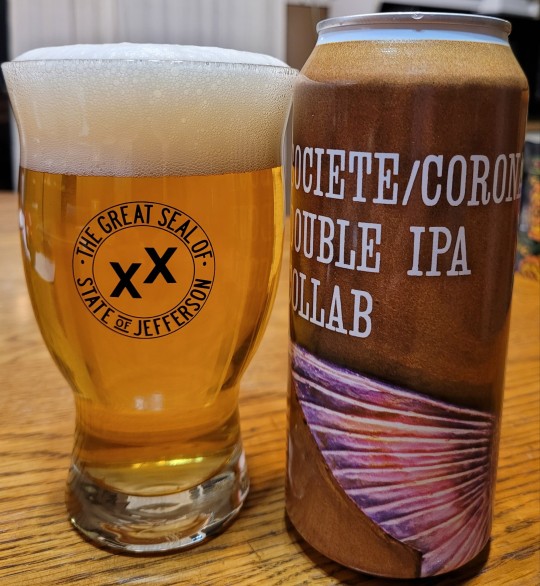
Usually there's a conflict between society and crown . . .
#societe/coronado#double ipa#collab#double india pale ale#societe brewing company#san diego#california#independent craft#coronado brewing co.#citra#simcoe#hbc 586
6 notes
·
View notes
Text
Beer Events 5.9
Events
Joseph Bramah patented the Beer Pump Handle (1785)
Duby Green patented an Improvement in the Manufacture of Yeast for Mashing and Brewing (1871)
Arthur Hughes died (1890)
Samuel Bolton died (1901)
August Goetz patented a Beer Tap (1916)
Crown Cork & Seal patented a bottle Cap (1933)
George Seiler patented a Means for Cooling Beverage Pipes (1950)
Continental Can Co. patented an Apparatus for Gassing Open Top Cans Having a Newly Filled Bubbling Liquid Therein (1989)
Beermann's Lincoln Lager debuted in six-packs (2001)
World Record for most beermats flipped and caught, 112 coasters (UK; 2001)
Rehrig Pacific patented a Plastic Beer Keg (2012)
Brewery Openings
Gigantic Brewing (Oregon; 2012)
Societe Brewing (California; 2012)
0 notes